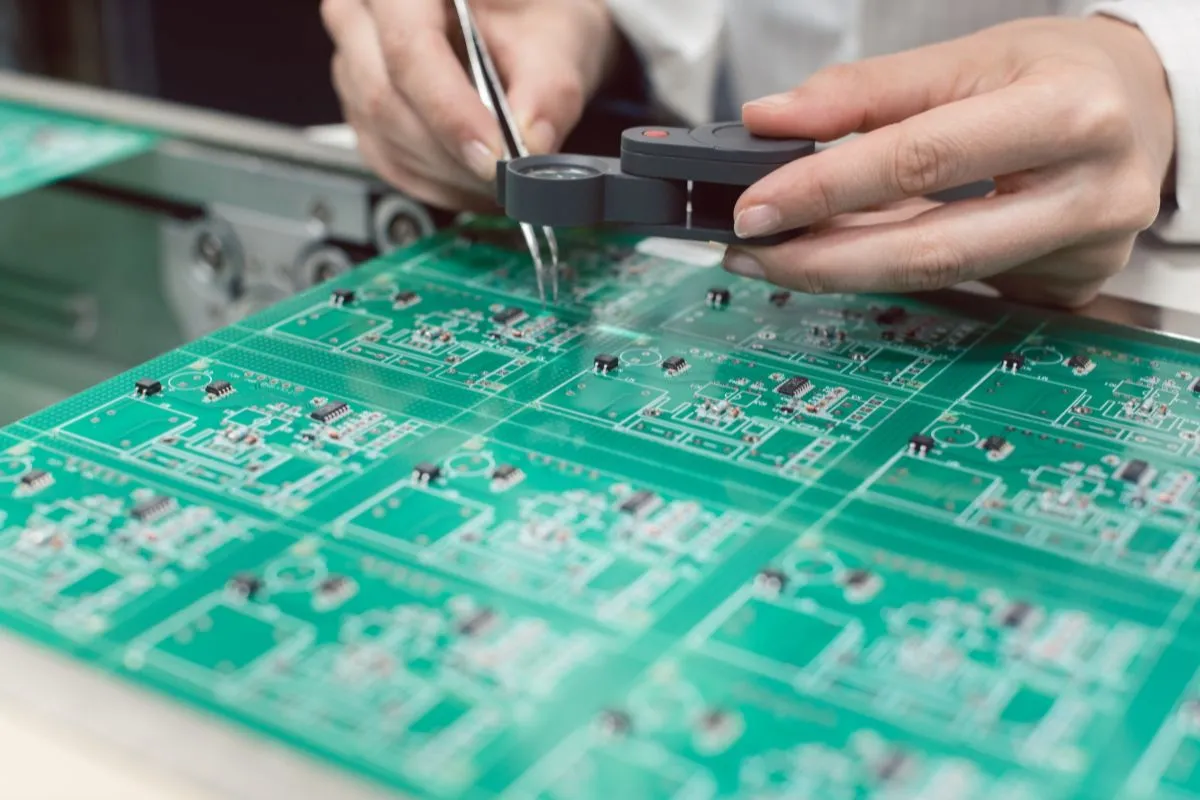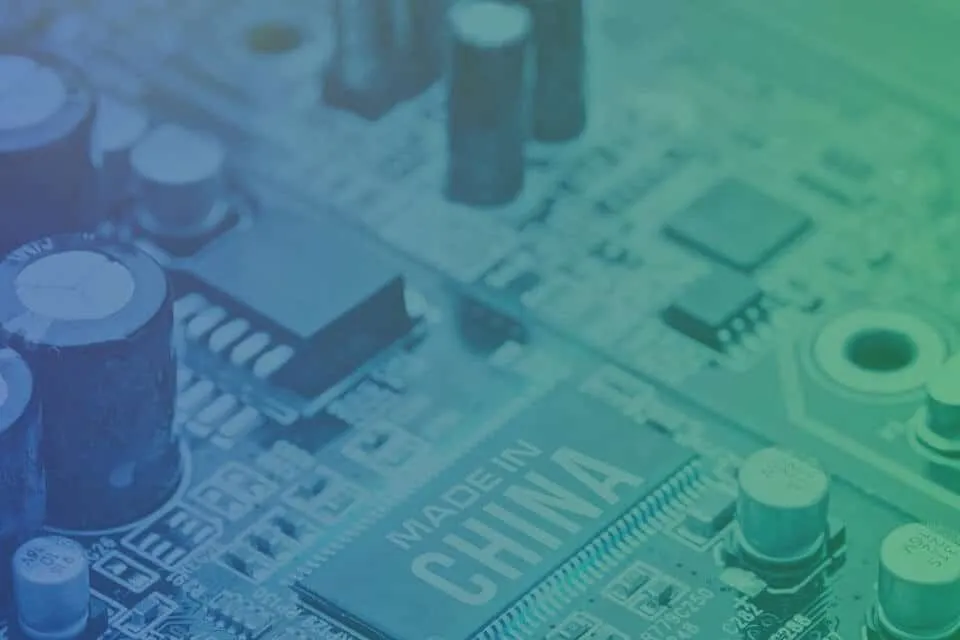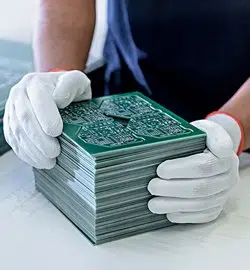PCB assembly is a crucial step in taking an electronic device from concept to production. However, for many engineers and designers, assembling a PCB can be daunting. PCB assembly involves sourcing components, soldering both surface mount and through-hole parts, troubleshooting errors, and thorough testing to ensure boards function properly. This requires skills, experience, and access to specialized equipment that many product developers lack.
Outsourcing PCB assembly to a specialized provider solves these challenges. An experienced assembly partner has the capabilities and expertise to transform your design files into fully assembled and tested boards ready for installation. They source all necessary components, use advanced assembly techniques for SMT and through-hole parts, perform extensive quality control checks, and deliver your finished boards in the required time.
The benefits of having professionals handle PCB assembly are immense. You save significant time and avoid headaches by letting experts handle the intricate assembly process. This frees you up to focus on design and other product development tasks rather than struggling through DIY assembly. Partnering with an assembly provider also ensures consistency and high quality, as they have the capabilities and processes to assemble PCBs right the first time efficiently.
In this guide, we’ll explain everything you need to know about ordering PCB assembly services. We’ll look at why outsourcing assembly is advantageous, how to select the right assembly partner, the step-by-step assembly process, working effectively with your chosen provider, and key takeaways to ensure your assembly order is successful. Let’s get started!
Why Order PCB Assembly?
Ordering PCB assembly from a specialized provider offers several key advantages compared to assembling boards yourself:
- Save Time
PCB assembly is incredibly time-consuming. The process of soldering SMT and through-hole components can take hours of manual labor per board. This doesn’t even account for sourcing components, applying solder paste, dealing with faulty parts, and testing. Outsourcing assembly eliminates these huge time sinks and frees up your schedule for more important work. - Ensure Quality
A professional PCB assembly company has specialized equipment, like pick-and-place machines, reflow ovens, and rigorous testing and inspection regimens. This results in thoroughly assembled PCBs built to the highest quality standards. DIY assembly risks imperfect soldering, poor component placement, and unreliability without proper tools and processes. - Access Specialized Expertise
Skilled assembly technicians and engineers have years of experience building PCBs for all types of products. They know the quirks and intricacies of the assembly process that first-timers don’t. By leveraging their expertise, your boards benefit from optimized processes tailored specifically to your design. - Focus on Design
Rather than worrying about assembling, you can devote your energy to PCB design optimization and enhancing the end product. While your partner focuses on building your prototype and initial production run, you can improve performance, functionality, and reliability.
Customers from all types of technology sectors leverage PCB assembly services to reap these advantages, including aerospace, industrial, automotive, medical, IoT, consumer electronics, robotics, and more. Any product development team can benefit from a professional assembly provider’s time savings, quality assurance, and skills.

PCB assembly: How is this process performed?
For you to know how to order PCB assembly, you should know how the process is performed. You should know how this specifically helps your PCB product/project.
PCB assembly is the phase in the manufacturing process whereby the bare printed circuit board is equipped with the specified electronic components. These components are essential to make the printed circuit board fully functional.
With these components embedded into your PCB, it becomes a circuit and makes the board function. The process of PCB assembly can be executed in two ways. They are:
While these two methods are commonly used as separate solutions, some PCBs are manufactured with a combination of both methods.
How to order PCB assembly: The process to follow
- Create and follow a workable timeline: Before you order a PCB assembly, you want to follow a practical timeline. Spending enough time considering different potential PCB manufacturers and what they offer is important. You want your PCB assembly process to be smooth and fast to enable you to get your products to customers. You should get a full scope of what each company offers before deciding. More importantly, look for a PCB assembly company that can work according to your timeframe.
- Consider experience: Another important step in ordering PCB assembly is to think about the experience of the PCB assembly company. Their level of experience should match the requirements of your PCB assembly project. Critical factors to check out with each company are:
- Do they have the necessary equipment for through-hole manufacturing or surface-mount technology or both?
- What is their minimum PCB assembly order size?
- What types of electronic components and PCBs do they deal with?
- Other possible services are on offer.
- The industries and companies that they have partnered with.
- Evaluate quality: When ordering your PCB assembly, you should check the company’s quality policies. It can be hard to access quality without any trial run. You could try to order a small run or a prototype to verify the product’s quality. However, you may also consider validating quality by accessing some factors like:
- Equipment: One good indicator that a PCB assembly produces quality products is its equipment. State-of-the-art machinery is a good sign that they would probably produce quality boards.
- Certifications: Certifications are used to indicate that the quality management system of a PCB assembly company has been validated and verified by a third-party quality assurance organization.
- Feedback from clients: Another good way to determine the quality of a PCB assembly company is to get feedback from their past clients.
- Explore options for testing: Testing should be an essential part of a PCB assembly company. It is important to conduct quality tests as potential board failures can cost you money and time apart from damaging your reputation. Considering companies with comprehensive quality control policies and definitive testing procedures is important. At this point, they should conduct detailed visual inspections. Other additional testing procedures that may be considered are:
- Verification of PCB circuits
- Detailed checking of all the components in the PCB circuit
- Automated optical inspections.
- Consider customer support: When ordering PCB assembly, you should demand a responsive customer support service. This is up there with product quality and technical capabilities. It is important to team up with a PCB assembly company that gets you the best PCB assembly service, fixes problems instantly, and answers all your questions. Sometimes, getting the right feedback from a customer support representative gives you a better idea of the quality procedures of the PCB assembly company. Getting fast answers and solutions from an efficient customer support team can help you save a lot of money and time.
- Compare costs: In ordering your PCB assembly, it is important to consider the necessary costs involved. You want to maximize value and reduce prices to give your customers quality products. A PCB assembly order will usually vary in terms of costs based on various factors like:
- Order size: Bigger orders may attract higher costs. However, there may be discounts for bulk orders.
- Services needed: Costs will be affected by what services you request. The surface-mount technology and through-hole manufacturing process come at varying costs. Costs can also be increased with special requests for extra testing, components procurement, etc.
- Labor costs: An advanced and involved PCB assembly project will likely attract a higher labor cost.
- Shipping costs: Shipping costs are also involved. This depends on the distance of the PCB assembly company from you, the order size, and the shipping option from the PCB assembly company.
- Watch out for potential red flags: An important part of ordering PCB assembly is knowing that not all assemblers can handle your order requirements. It is essential to watch for potential red flags to avoid ending up with the wrong PCB assembly company. Potential red flags include:
- Unresponsiveness: If you cannot communicate properly with the assembler, then they are not the right choice for you. A good PCB assembly company should be able to provide a prompt response when it is needed. They should also be able to provide you with regular updates throughout the PCB assembly process.
- Limited flexibility: A great PCB assembly company should be flexible enough to cater to your unique needs. If their requirements or policies are strict or make your PCB assembly process look challenging, then they are not suitable to handle your project.
- Extended timelines: You should be able to look for a PCB assembly company with a quick turnaround. Specific board assembly processes will need you to provide quick results. This is where an accelerated assembly process becomes highly essential.

Working With Your PCB Assembly Partner
Once you’ve selected your PCB assembly partner, working effectively with them is key to getting the desired results. Here are tips for smooth collaboration:
- Submit Complete Design Files
Provide complete Gerber files, bill of materials, placement files, and any other instructions upfront so your partner has everything they need to build your boards efficiently. - Communicate Expectations
Be clear about your target timeline, quantity, quality requirements, preferred components, testing needs, and any other specifications at the outset to avoid issues down the line. - Optimize Your BOM
Work iteratively with your partner to optimize the bill of materials. Take their guidance on consolidating components, standardized parts, and avoiding hard-to-source or obsolete parts. - Approve Prototypes
Review initial prototype boards carefully before full production run begins. Provide feedback on any issues with placement, soldering, components etc. so adjustments can be made. - Provide Feedback
Give open, constructive feedback throughout the relationship as issues arise. This helps your partner continue improving their assembly process to suit your needs better. - Stay Organized
Use project management tools to track progress, communicate changes, share documentation, and schedule reviews. This keeps the assembly process running smoothly. - Leverage Their Expertise
Your assembly partner likely has great insight from processing thousands of PCB designs. Utilize their recommendations to enhance your design for manufacturing and optimize future iterations.
Communicating frequently, clearly, and professionally with your chosen assembly provider enables the collaboration needed to deliver your complete, high-quality PCB assemblies successfully.
Related Posts
- One-stop PCB Assembly: The Definitive Guide to a Complete PCB Assembly Process
- What is PCB Assembly?
- What is the BoM of a PCB Assembly?
- Types of PCB Soldering Techniques in Assembly Process
- Guide to PCB Assembly Materials
- What is Wave Soldering?
- What is Reflow Soldering?
- Lead Vs. Lead-Free Soldering for PCB Assembly
- What Is PCB Assembly Drawing?



















